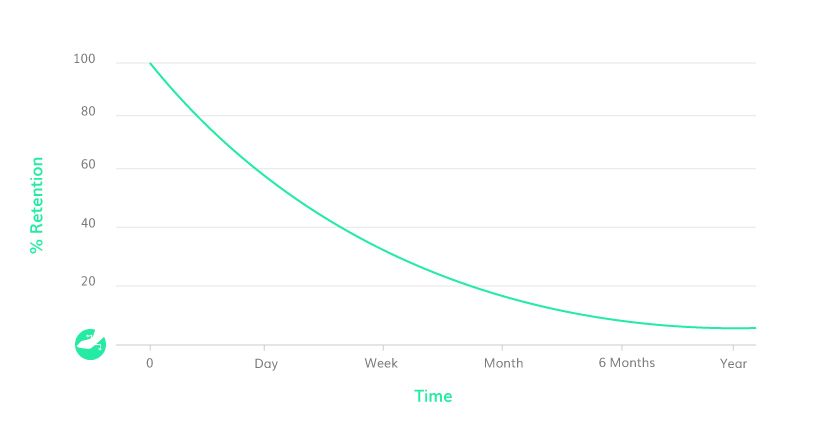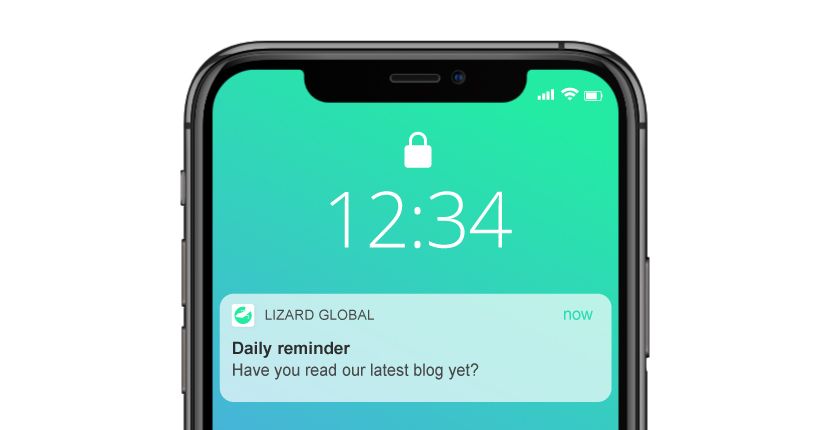5 Ways to Optimize your App's User Retention
Get the latest updates about our blog posts.
Subscribe so you don’t miss out!
Did you know that, as of January 2021, there were over 4.5 billion active users on the internet worldwide. That’s almost 60% of the global population! That said, with so many active users, it’s getting more difficult for companies to stand out from the crowd and keep their users interested in their products or services. With more than 4 million applications in the Apple App Store and Google Play Store, users have an almost unlimited choice in picking the right solution for their needs. With so many things to choose from, your company must be able to offer something that adds value to existing solutions. But how do you create a product that doesn’t just attract an audience, but also keeps them interested in the long term? In order to do that, you need to know the basics of user retention, and why it’s so important for achieving continuous growth.
What is user retention?
The user retention of your application shows you how many users keep using your application over a longer period of time. While user acquisition is important, user retention usually says more about the overall long-term success of your app. You might be acquiring a large number of users, but if they delete your app after a day or two, your solution will not gain the traction needed for long term success. That said, even the most popular apps lose a majority of their users in a matter of days. However, if you make user retention your primary objective, you can effectively steer your business towards growth and success.
The key to building a base of loyal, interested users and maintaining long-term growth is to implement a concrete user retention strategy. Businesses that manage to retain their users can greatly increase their revenue and become profitable much faster than one that doesn’t. Retention has an impact on a variety of key business metrics, including the number of active users, the level of involvement and engagement, user life cycles, and much more. A high retention rate often leads to a higher level of word-of-mouth advertising, which is one of the most valuable (and cost effective!) ways of spreading awareness of your application. Plus, an increasing number of retained users can do wonders for the overall user experience. For example, if your application thrives on its community, more users will result in a better experience, which results in a better likelihood of users recommending the app to others.
How to measure your retention rate?
Now that we know the basics of user retention, you might wonder how you know if your user retention is improving. In order to measure this, you’ll need a metric to focus on. The retention rate is the percentage of users that are continuing to use your application. In order to calculate this rate, you divide the total number of users at the start of a period by the total number of users at the end of that same period. For example, if you had 100 acquired users on January 1st and 15 of them were still using your app one month later, your retention rate at the end of the month is 15%.
Usually, the retention rate in your monthly analysis will decrease over time. For example, the first day maybe 65 of your 100 acquired users leave the app. This means that your one day retention rate is 35%. By day seven, another 10 users leave, by day 21 another 5 drop off, and eventually by day 30, you have 15 users of your 100 acquired users that are still using your app, ending up with a retention rate of 15%. This seems like an enormous drop, but these numbers represent the average retention rates of a well-performing application. Keep in mind that, even though it seems like you’re losing users, there are new users coming in during these 30 days that you don’t include in your measurements. After all, you were measuring your retention rate, not your newly acquired users.
Want to know more about how to measure the metrics that matter most for the growth of your business? Check out our lean analytics blog or get in touch with one of our experts for more info about data analytics and retention strategies!
The retention curve
The general flow of a retention rate over time can be visualized in a so-called retention curve. This curve declines quickly during the first days, because a lot of customers usually don’t take the time to go through the initial registration process and stop using the app before even accessing it. After the first few days, the curve will become less steep, but the decline will continue. Finally, once a solid user base has been established, the graph reaches a plateau that is barely declining. The more time passes, the more the curve flattens out.
Don’t get discouraged by an inevitably declining retention curve. In fact, there are quite a few ways to improve your curve and make the decline go less steep, and our experts can help you with that!

How to improve your retention rate?
Now that we have clarified the basics of user retention and measuring retention rates, we take a look at a few tips and tricks to easily crank up your app’s user retention and eventually achieve long-term growth.
1. Simplify the onboarding process
As mentioned before, a lot of customers regularly stop using an application before even actually interacting with its features. This is often caused by an onboarding process that is too complicated or extensive. In this case, users stop using the product because it’s unclear or too much of a pain to navigate through the first screens of your application before they’re even able to use the application. Think of a registration process in which users are required to fill in a long form that includes information that could also be added in a later stage of interacting with the app, such as bank details, address specifications or privacy preferences.
If you want your acquired audience to stick with your product, you’ll need to make the initial stage of entering the app as easy and clear as possible. You can allow your users to login via Facebook or Google, or simply by filling out their email address and password. This way, it won’t take longer than a minute to enter the application and start using it. Once the user is logged in, it should be instantly clear for them what the product has to offer, and how to best make use of the app. This can be done by the implementation of one or more introduction- or tutorial screens or slides, listing the most important features and highlighting specific buttons and their functions. Like the registration process, less is more, so avoid implementing more than four introduction steps, and give the user the opportunity to skip it.
2. Stay in touch and re-engage
With countless applications and ever-increasing storage space, most of our smartphones are packed to the brim with applications for different purposes. And while it’s great to have everything you need in the palm of your hand, it happens too often that newly installed applications get lost in the overwhelming collection in your app library. Luckily, there are numerous ways to keep your users aware of the existence of your application. While frequent posting on social media keeps your general audience and followers aware, sending push notifications and personalized emails are great for targeting individual users. To increase the effectiveness of re-engagement, you can consider offering deals to your users. Deliveroo and UberEats frequently send their users emails with promotion codes in order to increase the chances of users returning to their services.
3. Make use of smart push notifications
Sometimes all it takes is a little reminder to get your users back into your app. As mentioned above, push notifications are great for reminding your users of your application. Although the idea of a push notification sounds simple, there are a lot of strategies to greatly improve the impact of your notifications:
• Sending a push notification at the right time can make all the difference. You want your user to immediately notice and click on your notification, so you’ll have to find out at what times your user is actively using their phone.
• The message itself needs to be short, concrete and clear. The longer the message inside of the notification, the higher the change your user probably skips reading and interacting with it.
• Personalized push notifications with your user’s name, personal reference, or information based on their profile or application usage usually generate higher interaction than a more general message.
• Challenge your users by time-limited content and offers. For example, Duolingo sends personalized push notifications to make users finish an in-app lesson before the day is over to win time-limited challenges and badges.

4. Simplify external sharing and inviting
A great way to acquire new users and retain existing users at the same time is by simplifying the process of inviting friends and family. Users are more likely to stay loyal to your app if their social circle is also using the application. By making it easy to share in-app content or achievements, users raise initial awareness of your app in their social circles. The next step is to simplify the process of inviting friends and family, and rewarding your users for every person they invite.
5. Implement a loyalty & reward strategy
As you might have already guessed from the tips and tricks above, rewarding your customers for their loyalty is probably one of the most effective ways to retain your users. These loyalty & reward programs not only encourage people to continue to use the product, but they also make them feel significant and valuable to your brand.
Need a hand?
Retaining your customers after acquisition requires a significant amount of knowledge and experience in the field. Not only are there many different techniques to implement, you also need to know and understand your target audience in order to match the right technique with the right users. No worries, we got you covered! Our experts at Lizard Global know exactly how to implement the right retention strategies for your application and target users, while closely measuring and keeping track of your success. Get in touch with our specialists and find out what we can do for you!




